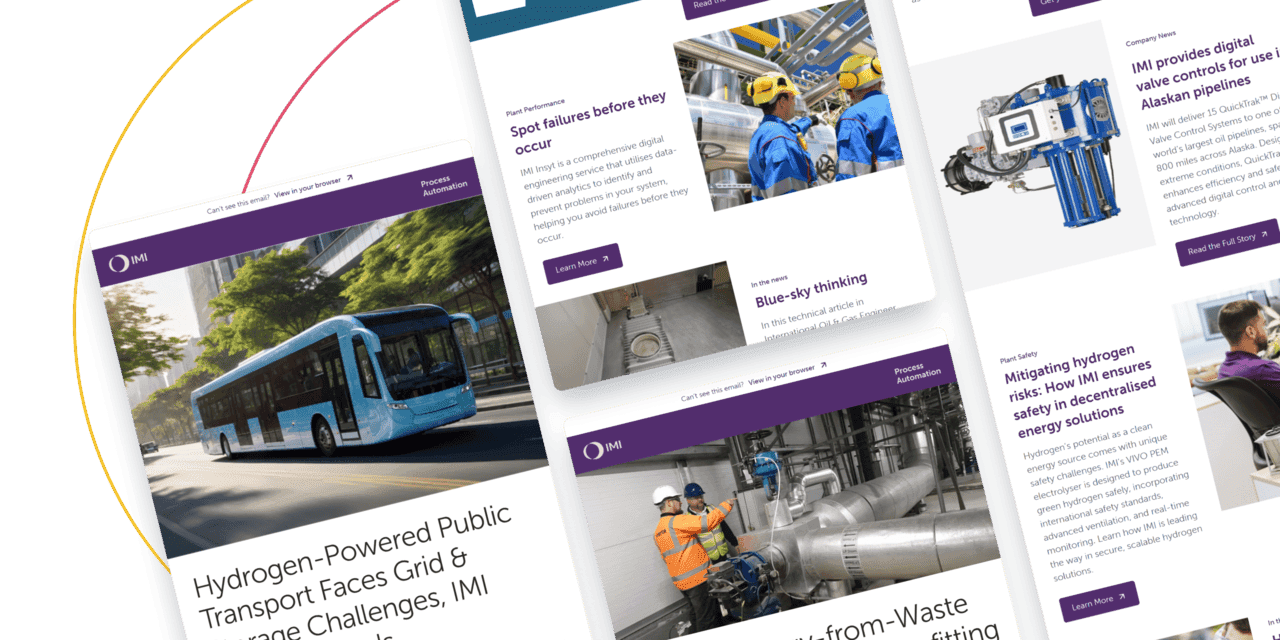Organization Sectors
Organization Sectors
Stay up to date on all the latest Process Automation news
© 2025 IMI plc, All Rights Reserved
© 2025 IMI plc, All Rights Reserved

COMPANY NEWS

Written By Rob Taylor
April 7, 2024
There are cases, however, where this approach is difficult if not impossible. Take the defence sector for example. In such environments, the stakes are so high that a return to the drawing board is almost always necessary.
This is a process that IMI has been directly engaged in over the last five years, culminating in the creation of a legitimately game-changing technology for the world’s most advanced submarine fleets
The process began with an earlier IMI ball valve design that had been used widely across several marine environments for over sixty years and was therefore a well-established technology. In 2019, the product was being showcased at a trade show in Japan where it caught the attention of a senior naval officer. While impressed by the design, his main concern was acoustic performance and in particular a valve’s ability to dampen any sound generated when a submarine is in operation.
It was the senior officer’s comment that got the team thinking – not necessarily about existing valves and how they can be adapted but rather the bigger picture for our customers. We effectively went back to first principles, as most problems in defence require. This meant looking at our customers’ biggest pain points and how we might be able to solve them. And in the naval officer’s case, this was the noise generated by his fleet as they completed exercises in some of the most sensitive regions of the world.
Given that aircraft are more visible than submarines, stealth is often thought of as an ‘external’ issue. But this is not the whole story. It’s true that military aircraft use radiation-absorbent materials to minimise the reflections picked up by radar systems. Submarines also use similar technology – such as anechoic tiles – on the hull to avoid detection. But the world’s navies face the added complexity of passive sonar and hydrophones, which are used to listen for certain sounds in the ocean.
These sounds or ‘acoustic signatures’ are easy for enemies to notice, even among the loud noises that emanate under the sea. The trouble is there are many parts of a submarine that generate noise and poorly designed valves are among the biggest offenders. In emergency situations, a vessel and its crew must keep decibels to an absolute minimum, but this is difficult because loud noises and vibrations are byproducts of uncontrolled fluid velocities.
Low noise is only one part of the challenge when designing for stealth, especially in submarines. Today’s navies will also seek to mislead a listening enemy by masking or reshaping their acoustic signatures. It was this realisation that set IMI’s Valve Doctors on a new path, moving from an issue of sound control to sound manipulation. This was a considerable challenge for the team, not least because it appears to contravene the basic laws of physics. Fluid behaves in a certain way and it’s very difficult to change that. Still, we assumed ‘noise control and manipulation throughout the entire vessel’ as our new mission statement and constantly revalidated it against customers’ requirements.
Fluid may be difficult to control but IMI has pedigree in this area having pioneered DRAG® technology, which is now recognised as an industry standard for velocity and kinetic energy control. DRAG® served as the starting point though the final design became something entirely different, taking advantage of the latest advances in additive manufacturing.
Successful sound manipulation requires intense testing and scrutiny. Recognising this, IMI’s engineers employed advanced computational fluid dynamics (CFD) to accurately model and predict the acoustic performance of a proposed valve design.
This capability was critical because it opened up a huge range of possibilities for masking acoustic signatures that would otherwise be too complex to develop and manufacture without CFD and powder bed fusion techniques. Working this way also ensured the team kept sight of the valve’s original purpose – i.e. to minimise the deleterious phenomena commonly observed in control valves. The outcome of this work is called Acoustic Control Vantage (ACV), a powerful technology for environments where underwater discretion is critical. The performance improvements have been nothing short of remarkable. ACV can reduce peak velocities from 190 m/s to just 90 m/s, in turn delivering sound attenuation of up to 20dB. This is a staggering figure given that a reduction of even 1-2dB in submarines is considered a success. But ACV can also be used to manipulate frequencies, thereby giving fleets a better chance of going undetected, even when valves are in operation.
Performance is only one aspect of what has made ACV so important. This entire process has demonstrated the power of placing customers at the heart of complex engineering challenges. So, by not relying on received wisdom, IMI’s Valve Doctors have been able to redefine what’s possible in arguably the most demanding environment on earth – a fitting tribute as the programme celebrates 25 years in 2024.
Stay up to date on all the latest news and articles from IMI.

Stay up to date on all the latest news and articles from IMI.


Stay up to date on all the latest news and articles from IMI.
